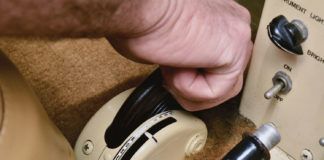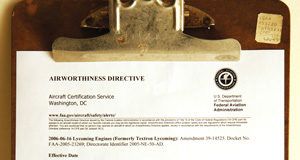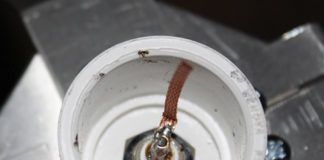In the final installment of KITPLANES Firewall Forward, editor at large Paul Dye takes a close look at engine cooling for air-cooled aircraft. Learn the basics of how cowling design and both hard and flexible baffling work together to shed the heat of combustion. He also offers some indispensable maintenance tips.
 This series is sponsored by Tempest Aero Group.
This series is sponsored by Tempest Aero Group.
View the complete list of published Firewall Forward videos.














Awesome job guys. I really enjoyed this Firewall Forward series, as well as the Metal Magic series. I’ll definitely use some of these tips and tricks and apply them to my Pitts Special project. I hope you guys continue to make these.
Did I see an incorrect seal lap on the left side??
Great Firewall Forward series, especially for us non A&P,s that just want to knowledgeable re. our planes. Hope yo will do more of these!
Really enjoyed these videos! Great insight and very useful tips. Like the other comments, I hope you continue to make these series. Would really like to see a series on any basic maintenance that the average pilot (non A&P) is legally able to do. Most of us know what we can and can’t do, but the tips and tricks from these videos come in very handy.
Another amazing and informative series. I hate seeing it come to an end. Looking forward to more content in the future.
Paul didn’t cover a somewhat arcane but vital issue – how important it is that the flexible seal part of the baffles doesn’t deflect in operation and allow air to bypass to intended cooling flow. It has to conform to what are frequently irregular contours on the interior surfaces of the cowl and engine, and seal completely, while remaining sufficiently rigid so that the air blast at 200 MPH doesn’t deflect the seal away from the intended inside sealing surfaces.
This is important because it is possible for a seal that appears to fit well and is expected to stay in position, to instead deflect enough to let a problematic amount of airflow bypass the desired path. And then it can flex back into position at rest with the engine off and no airflow, with no apparent evidence that it has been out of position. If it can, it will.
As in enough to cause continous cylinder head temperatures to exceed 350 deg F, which is the temperature at which the typical 356-T6 aluminum heat treated casting starts to lose temper and soften. It’s not uncommon to see 500+ deg F in a bad case which makes the casting suspect and prone to the catastrophic failure of dropping a valve seat.
The best you can do is to remove the head (or heads) and attempt to effect a valid hardness test on the casting in the probable affected area of the head/combustion chamber. Or just put fresh jugs on a nearly new engine. Depends on what your risk tolerance is.